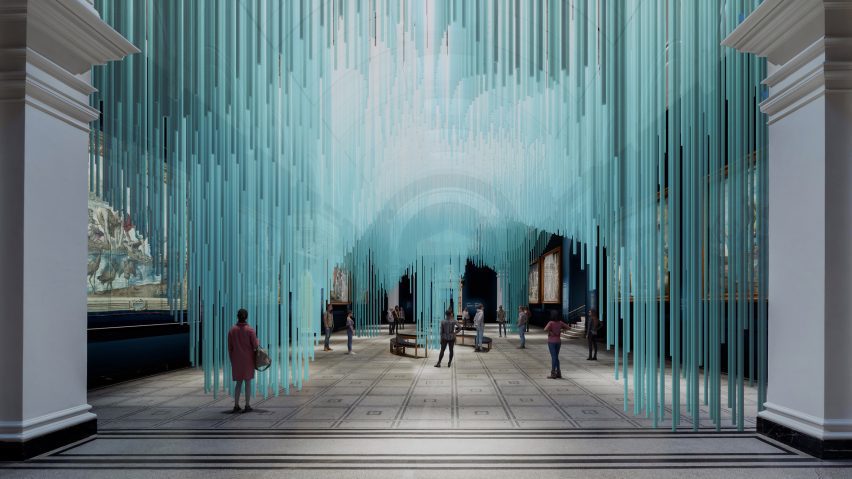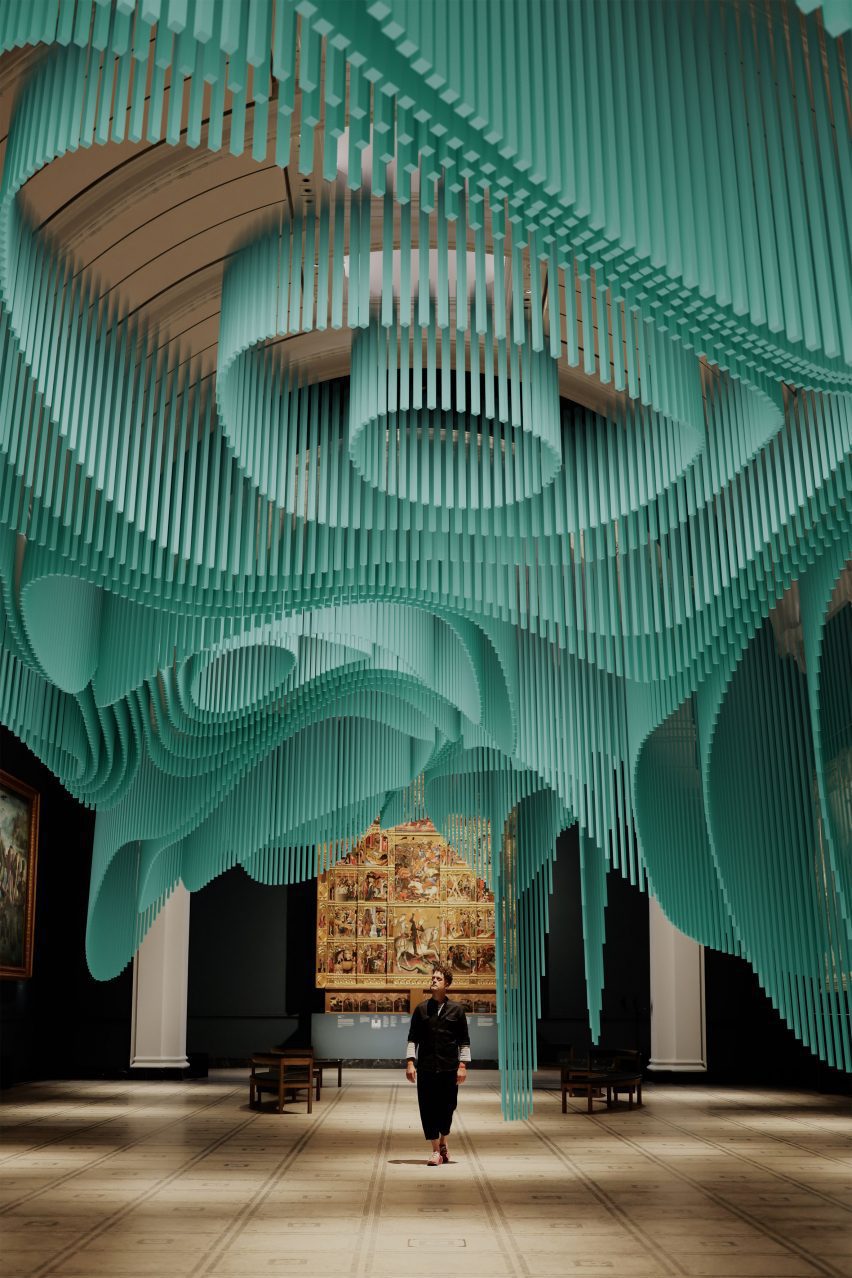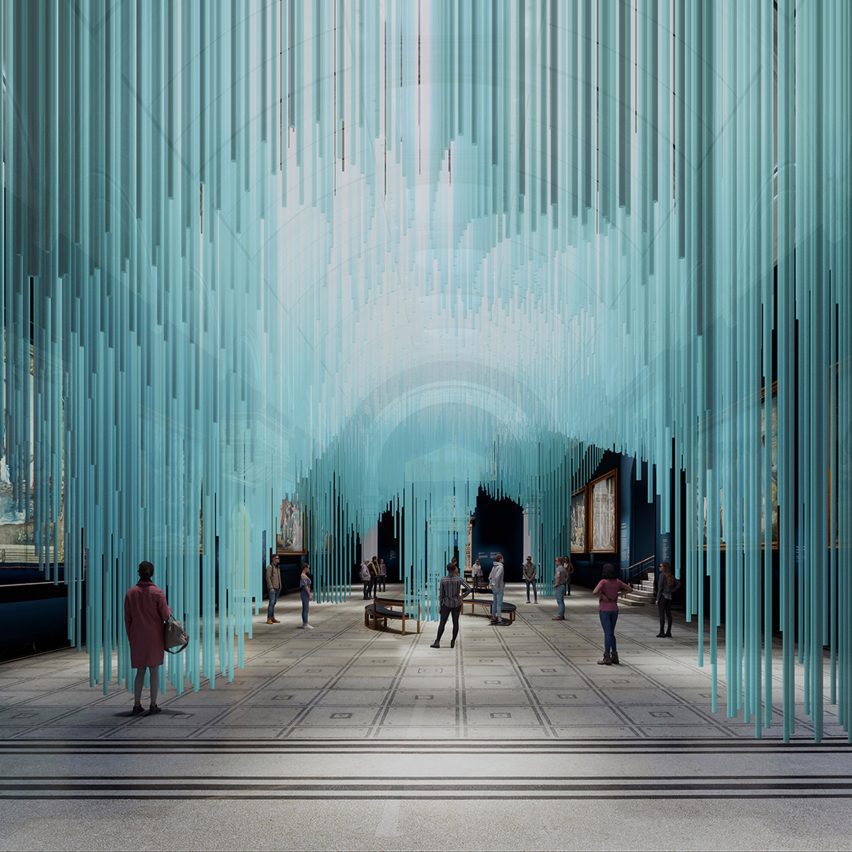
Sou Fujimoto creates undulating virtual installation in London
Visitors to this year's London Design Festival can use mixed-reality glasses to manipulate their walk through Medusa, a virtual installation by architect Sou Fujimoto.
Created by the Japanese architect Fujimoto in collaboration with mixed reality studio Tin Drum, the virtual structure has been installed at the V&A Museum.
Up to 50 guests at a time can put on a pair of mixed-reality glasses and explore the experimental architectural forms designed by Fujimoto.
As they move through Medusa, the dynamic structure "changes and evolves based on the movement of its admirers".

"Visitors will be able to simultaneously observe this piece of virtual architecture, floating and moving inside of the space that is confined by the gallery itself," said Yoyo Munk, Tin Drum's chief science officer.
"The structure is observing the entire group and changing itself based on what it's observing about the audience behaviours, rather than any individual," he told Dezeen.
"It explores the contrast between the individual and the collective."

The installation takes its name from the mythological figure Medusa as well as the zoological term for a jellyfish, in a conflation of myth and science that sits at the core of the design.
"We liked the idea of a figure of life that finds this balance between something that is beautiful, attractive and dangerous," explained Munk.
The studio also used the primal attraction to light and underwater bioluminescence to inform the evolving dynamic structure.
"We drew a lot of inspiration from natural light structures like the aurora borealis (also know as the Northern Lights) and our connection to light sources," recalled Monk.
"When we look at an aurora borealis, we share some commonality with the neural circuitry that leads prey and so forth to be consumed."
Medusa was designed to provoke individuals to play, interact and follow the lights as they walk through the virtual installation.
According to Monk, both Tin Drum and Fujimoto were most interested in the potential of using light as an architectural medium.
"What's exciting for all of us is this idea that you could construct structures that had no physical form and existed only as light being projected into the eyes," said Monk.
"We get the sense of a space that has a design structure that exists in a spatially explorable sense – that has the ability to change our perceived environment and the way that we feel and explore while having no physical form."
Fujimoto established Sou Fujimoto Architects in 2000. Although he is best known for his buildings, he has worked on a number of installations. In 2017, he created a series of abstract bookshelves made from thin steel rods for Design Miami/Basel.
For the fashion brand COS, Fujimoto used spotlights, mirrors and sound to create an immersive installation that responds to visitors' movements.
London Design Festival 2021 takes place from 18 to 26 September. See Dezeen Events Guide for an up-to-date list of architecture and design events taking place around the world.